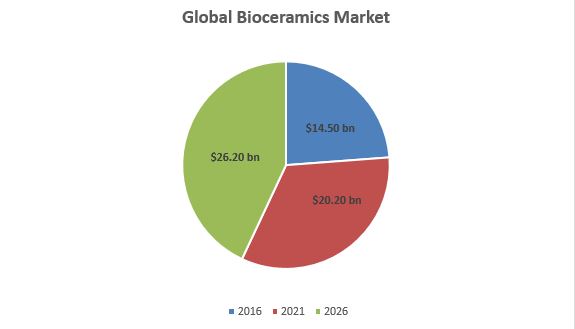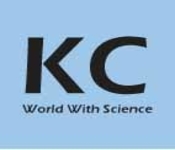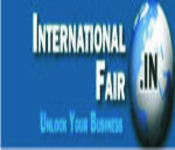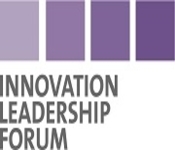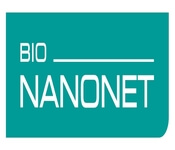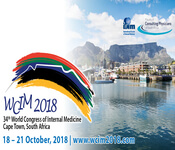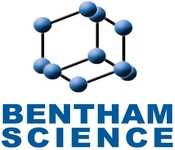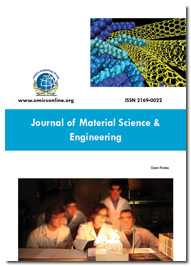Theme: “Sustainable new materials and recycling technologyâ€
MatSciEngg 2018
With the magnificent success of Materials Congress 2017, ME Conferences is proud to announce the 31st Materials Science and Engineering Conference: Advancement & Innovations, to be held during Oct 15-17, 2018 at Helsinki, Finland. On this auspicious occasion, Organizing Committee invites the participants from all over the globe to take part in this annual flagship conference with the theme “Sustainable new materials and recycling technology”. MatSciEngg 2018 aims in proclaim knowledge and share new ideas amongst the professionals, industrialists, and students from research areas of Materials Science, Nanotechnology, Chemistry and Physics to share their research experiences and indulge in interactive discussions and technical sessions at the event. The Conference will also have a space for companies and institutions to present their services, products, innovations and research results.
Helsinki, Finland
Finland, nation situated in northern Europe. Finland is one of the world's most northern and topographically remote nations and is liable to an extreme atmosphere. About 66% of Finland is covered by thick forests, making it the most thickly forested nation in Europe. Finland additionally frames a representative northern outskirt amongst western and eastern Europe and Russia toward the east, the Gulf of Bothnia and Sweden toward the west. Finland's populace is 5.5 million (2016), and most of the populace is moved in the southern region. 88.7% of the populace is Finnish and speaks Finnish, a Uralic dialect disconnected to the Scandinavian dialects; next come the Finland-Swedes (5.3%). Finland is the eighth biggest nation in Europe and the most scantily populated nation in the European Union. It is a parliamentary republic with a focal government situated in the capital city of Helsinki, nearby governments in 311 municipalities, and one self-ruling district, the Åland Islands. More than 1.4 million individuals live in the Greater Helsinki metropolitan region, which produces 33% of the nation's GDP.
Why to attend?
31st Materials Science and Engineering Conference: Advancement & Innovations 2018 offers a fabulous chance to meet and make new contacts in the field of Materials Science and Engineering, by giving coordinated effort spaces and break-out rooms with lunch facilities for delegates between sessions with precious systems administration time for you. It enables agents to have issues tended to on Materials Science by perceived worldwide specialists who are in the know regarding the most recent improvements in the Materials Science field and give data on new methods and innovations. This International Materials Science gathering will include widely acclaimed keynote speakers, all- hands conferences, youthful research discussion, blurb introductions, specialized workshops and vocation direction sessions. The delight of going to 31st Materials Science and engineering conference 2018 carries with it change and incremental development in your way to deal with and get things done, in the more extensive way to see things and the excellence to live universal assorted variety.
Come be a Part of it...!
Track 1:Material Science and Engineering
Materials science, the investigation of the properties of solid materials and how those properties are controlled by a material's constitution and structure. It grew an amalgam of strong state material science, metallurgy, and engineering. Since the rich assortment of materials properties can't be comprehended inside the setting of any single established order. With a fundamental comprehension of the sources of properties, materials can be chosen or intended for a gigantic assortment of uses, running from auxiliary steels to microchips. Materials science is subsequently critical to designing exercises, for example, hardware, aviation, media communications, data handling, atomic power, and vitality transformation. Materials researchers accentuate seeing how the historical backdrop of a material (its handling) impacts its structure, and accordingly the material's properties and execution. The comprehension of preparing structure-properties connections is known as the materials worldview. This worldview is utilized to propel understanding in an assortment of research regions, including nanotechnology, biomaterials, and metallurgy. Materials science is additionally an imperative piece of criminological designing and disappointment examination - researching materials, items, structures or parts which fall flat or don't work as expected, making individual damage or harm property. Such examinations are critical to comprehension, for instance, the reasons for different avionics mishaps and occurrences.
Track 2: Nanomaterials and Nanotechnology
The field of nanomaterials is inaccurately dealt with, like the traditional field of science, into characteristic (carbon-based) nanomaterials, for instance, fullerenes, and inorganic nanomaterials in perspective of various segments, for instance, silicon. Instances of nanomaterials fuse fullerenes, carbon nanotubes, nanocrystals, etc. Nanomaterials portray, on a basic level, materials of which a single unit is evaluated (in no short of what one estimation) in the region of 1 and 1000 nanometers (10−9meter) however is normally 1-100 nm. As nanotechnology makes, nanomaterials are finding uses as a piece of therapeutic administrations, equipment, magnificence mind items, materials, information advancement and environmental security.
Nanomaterials are not only the process of minimizing the size of particles. They often need different manufacturing approaches and they call for a chance examination of possible exposures rising in the midst of their make and use.
Track 3: Biosensors
The expression "biosensor" is another way to say "natural sensor." A biosensor is an investigative gadget which changes over an organic reaction into an electrical flag. The gadget is comprised of a transducer and an organic component that might be a chemical, an immune response or a nucleic corrosive. The biocomponent collaborates with the analyte being tried and the natural reaction is changed over into an electrical flag by the transducer. Electrochemical biosensors are typically in view of enzymatic catalysis of a response that produces or expends electrons (such chemicals are appropriately called redox proteins). Amperometric biosensors are independent coordinated gadgets in view of the estimation of the current coming about because of the oxidation or decrease of an electrodynamic natural component giving particular quantitative expository data.
A potentiometric biosensor can be characterized as a gadget joining an organic detecting component associated with an electrochemical potential transducer. Potentiometric biosensors more often than not depend on a biochemical response prompting less difficult compound species and its ensuing electrochemical identification. The expository flag created by a potentiometric biosensor is an electrical potential. An electrochemical biosensor is an independently incorporated gadget, which is fit for giving particular quantitative or semi-quantitative expository data utilizing an organic acknowledgment component (biochemical receptor) which is held in coordinate spatial contact with an electrochemical transduction component.
Track 4: Biomaterials and Healthcare
The biomaterials investigate amass expects to give material based answers for rising worldwide wellbeing and natural needs. In wide terms, we attempt to inquire about into the structure, plan and utilitarian execution of normal and artificially determined unadulterated and composite biomaterials with indicative or remedial effect on living frameworks. Our examination is composed of the covering research territories of nanostructured biomaterials, keen and bioresponsive biomaterials and the biointerface. Enter qualities are in the mix of principal and connected research including worldwide advancement systems with scholastic, modern and clinical accomplices to amplify explore preparing potential and translational effect. This permits a scope of assorted and multidisciplinary to explore interests encompassing the structure, plan and useful execution of cutting-edge materials for use in organic and ecological frameworks. The applications for these materials go from medicinal gadget advances and tissue builds, nanotechnology, medicate conveyance frameworks, cardiovascular stenting, biosensor frameworks in ailment finding, ophthalmic biomaterials, materials which direct host reaction science, ecological cleaning, and shrewd material plan.
Track 5: Fibers and Composites
Fiber-fortified composite (FRC) is superior fiber composite accomplished and made conceivable by cross-connecting cellulosic fiber atoms with tars in the FRC material framework through a restrictive sub-atomic re-designing procedure, yielding a result of excellent auxiliary properties.
Through this accomplishment of sub-atomic re-designing chose physical and basic properties of wood are effectively cloned and vested in the FRC item, notwithstanding other basic ascribes to yield execution properties better than contemporary wood.
FRC is a composite building material that comprises of three parts: the strands as the irregular or scattered stage, the lattice as the ceaseless stage, and ) the fine interphase area, otherwise called the interface. This is a sort of cutting-edge composite gathering, which influences utilization of rice husk, to rice structure, and plastic as fixings. This innovation includes a strategy for refining, mixing, and aggravating regular filaments from cellulosic squander streams to shape a high-quality fiber composite material in a polymer network. The assigned waste or base crude materials utilized as a part of this occurrence are those of waste thermoplastics and different classes of cellulosic squander including rice husk and sawdust.The disappointment systems in FRC materials incorporate delamination, intralaminar grid breaking, longitudinal framework part, fiber/lattice debonding, fiber haul out, and fiber fracture.
Track 6: Ceramics and Magnetic Materials
Long haul mechanical unwavering quality is a key issue in their definitive use for a particular application. Connections amongst's preparing and administration conditions/condition to the disappointment of earthenware production by break, weakness or twisting are key parts of materials applications. This track covers Mechanics, Characterization Techniques, and Equipment, Tribology and Wear, Environmental Effects, Reliability, and Small Scale Testing, Mechanical Behavior test, Processing - Microstructure - Mechanical Properties Correlation. Ceramics production is delegated inorganic and nonmetallic materials that are basic to our day by day way of life. Artistic and materials engineers are the general population who plan the procedures in which these items can be made, make new kinds of clay items, and find diverse utilizations for earthenware items in regular day to day existence.
Ceramics production is surrounding us. This classification of materials incorporates things like tile, blocks, plates, glass, and toilets. Pottery can be found in items like watches (quartz tuning forks-the timekeeping gadgets in watches), snow skies (a piezoelectric-earthenware production that pressure when a voltage is connected to them), cars (spark plugs and fired motor parts found in racecars), and telephone lines. They can likewise be found on space transports, machines (finish coatings), and planes (nose cones). Contingent upon their technique for development, pottery can be thick or lightweight. Ordinarily, they will exhibit fantastic quality and hardness properties; nonetheless, they are regularly weak in nature. Earthenware production can likewise be framed to fill in as electrically conductive materials, objects enabling power to go through their mass, or separators, materials keeping the stream of power. A few pottery, as superconductors, likewise show attractive properties.
Track 7: Catalytic Materials
It has been said that everything is a catalyst for something. Although profound, the statement is not very useful unless materials are organized into groups with common explained with theories or models, and systematized into patterns from which new catalysts may be predicted. In this chapter we examine common types of catalytic materials, current theories underlining their mode of action, and activity patterns useful in design. Much of this is brief by necessity, but the interested reader will find sufficient references for further study. For the casual reader, this chapter illustrates the complex background in catalysis and testifies to the current attempts to lift catalysis from an “art” to a “science.”
TYPES OF CATALYTIC MATERIALS
Catalytic materials fall into well-defined categories. The state of each catalyst is a consequence of process demands, e.g., for high activity,or degree of interaction with other components. Classification by electrical conductivity, as metals, semiconductors, and insulators, remains a satisfactory method in treating the theoretical background and behavior patterns of these widely differing materials.
Track 8: Electrical, Optical, and Magnetic Materials
Material science has a basic influence in metallurgy also. Powder metallurgy is a term covering a broad assortment of courses in which materials or parts are delivered utilizing metal powders. They can stay away from, or unbelievably diminish, the need to use metal removal shapes and can reduce the costs. Pyrometallurgy consolidates warm treatment of minerals and metallurgical metals and thinks to acknowledge physical and substantial changes in the materials to enable recovery of beneficial metals. An aggregate learning of metallurgy can help us to isolate the metal in a more conceivable way and can be used to a more broad region. The extraction of productive minerals or other topographical materials from the earth is called as Mining and Metallurgy is the field of Materials Science that game plans with physical and manufactured nature of the metallic and intermetallic blends and mixes. Distinctive strategies and innovations utilized as a part of the extraction and generation of different metals are extractions of metals from minerals, decontamination; Metal throwing Technology, plating, showering, and so forth in the arrangement of procedures, the metal is subjected to thermogenic and cryogenic conditions to investigate the erosion, quality, and durability and to ensure that the metal is crawled safely.
Tracks 9: Mining, Metallurgy and Materials Science
Material science has a basic influence in metallurgy also. Powder metallurgy is a term covering a broad assortment of courses in which materials or parts are delivered utilizing metal powders. They can stay away from, or unbelievably diminish, the need to use metal removal shapes and can reduce the costs. Pyrometallurgy consolidates warm treatment of minerals and metallurgical metals and thinks to acknowledge physical and substantial changes in the materials to enable recovery of beneficial metals. An aggregate learning of metallurgy can help us to isolate the metal in a more conceivable way and can be used to a more broad region. The extraction of productive minerals or other topographical materials from the earth is called as Mining and Metallurgy is the field of Materials Science that game plans with physical and manufactured nature of the metallic and intermetallic blends and mixes. Distinctive strategies and innovations utilized as a part of the extraction and generation of different metals are extractions of metals from minerals, decontamination; Metal throwing Technology, plating, showering, and so forth in the arrangement of procedures, the metal is subjected to thermogenic and cryogenic conditions to investigate the erosion, quality, and durability and to ensure that the metal is crawled safely.
Track 10: Materials Science in Construction Engineering
Amid the previous decade, the necessities of the country and the world have required structural architects to likewise concentrate on the reuse of important materials and assets, which thusly has made energizing difficulties in seeing how to artificially and mechanically balance out these materials for reuse. Current difficulties require the use of micromechanics, PC helped representation devices, thermodynamics, energy, and a valuation of developing procedures to tackle issues. Structural specialists have adjusted and connected multidisciplinary standards to take care of issues and have utilized comparative ways to deal with those utilized as a part of strong rocket fuels, cement, metals, and earthenware production. One of the greatest gifts for the building materials division is the apparently perpetual raising of the bar by different national arranging offices on "green" building. Agreeing a give an account of Forbes.com, which refers to an examination report from Navigant Research, the overall market for green development materials will develop from US$116 billion out of 2013 to in abundance of US$254 billion by 2020. Europe, with its accentuation on diminishing emanations, will presumably be the biggest territorial market, representing around half of the worldwide interest for items by 2020. TechNavio delivered a report, "Worldwide green building material market 2012– 2016," in which it conjecture request development internationally to be around 17.9% compound yearly development rate.
In history there are slants in building materials from being: normal to winding up more man-made and composite; biodegradable to enduring; indigenous (nearby) to being transported comprehensively; repairable to dispensable; and decided for expanded levels of flame wellbeing. These patterns tend to expand the underlying and long-haul monetary, biological, vitality, and social expenses of building materials.
Track 11: Polymer Science and Technology
The fundamental worries for people, later on, will be vitality assets, nourishment, wellbeing, versatility and foundation, and correspondence. The chief difficulties in the up and coming decades will be the populace that is expanding bit by bit, the grouping of individuals in extensive urban focuses, globalization and the normal difference in atmosphere. There is almost certainly that polymers will assume a key part in finding fruitful routes in taking care of these difficulties. Polymers will be the material of the few thousand years and the creation of polymeric parts i.e. green, maintainable, vitality proficient, amazing, low-valued, and so on will guarantee the availability of the finest arrangements around the globe. Manufactured polymers have since quite a while assumed a generally imperative part of display day restorative practice. Numerous gadgets in medication and even some counterfeit organs are developed with progress from engineered polymers and brilliant polymers for microfluidics and Self-mending and reprocessable. Polymer Systems have been utilized in different mechanical applications. Polymer Science can be connected to spare vitality and enhance sustainable power source innovations.
Track 12: Nuclear Materials & Emerging Smart Materials
Capacity of a country to saddle nature and its capacity to adapt up to the difficulties postured by it is dictated by its total learning of materials and its capacity to create and deliver them for different applications. Propelled Materials are at the core of numerous innovative improvements that touch our lives. Electronic materials for correspondence and data innovation, optical filaments, laser strands sensors for insightful condition, vitality materials for sustainable power source and condition, light combinations for better transportation, materials for key applications and that's just the beginning.
Track 13: Materials for Green Technology
Diverse geophysical and social weights are giving a move from customary petroleum products to inexhaustible and supportable vitality sources. We should make the materials that will bolster rising vitality advancements. Sun based vitality is the best need of the office, and we are giving broad assets to creating photovoltaic cells that are both more effective and less expensive than current innovation. We likewise have broad research on cutting-edge battery innovation. Materials execution lies at the core of the advancement and enhancement of efficient power vitality innovations and computational techniques now assumes a noteworthy part in demonstrating and anticipating the properties of complex materials.
Track 14: Mechanics, Characterization Techniques and Equipment’s
Portrayal, when utilized as a part of materials science, alludes to the more extensive and more extensive process by which a material's structure and properties are checked and measured. It is a basic procedure in the field of materials science, without which no logical comprehension of designing materials could be as curtained. Spectroscopy alludes to the estimation of radiation force as a component of wavelength. Microscopy is the specialized field of utilizing a magnifying lens to see questions that can't be seen with the exposed eye. Portrayal and testing of materials is imperative before the utilization of materials. Appropriate testing of material can make the material more adaptable and sturdy. Research shows the worldwide material testing hardware advertise created incomes of $510.8 million out of 2011, developing at a minimal rate of 3.1% over the earlier year. The market is ruled by the 'enormous three' Tier 1 contenders, in particular, MTS Systems Corporation, Instron Corporation, and Zwick/Roell, while different members have performed better territorially, for example, Tinus Olsen in North America and Shimadzu Corporation in the Asia Pacific.
Track 15: Computational Materials Science
Computational systems are twisting up logically basic in each part of science and building. Employment of Materials Science and Engineering ranges from the speculative figure of the electronic and helper properties of materials to substance vitality and equilibria or showing the blend vitality and equilibria in materials getting ready and creating operation. Computational materials join Materials showing and re-enactments, models of science, investigation of bleeding edge materials. Outlining materials or photoresists are light delicate materials used as a piece of the photolithography (device planning method) techniques to shape composed covering on a surface for wafers, generally, silicon wafers, used as a piece of the equipment and semiconductors.
Materials science is advancing each day. A great many concoction and material blends make challenges for researchers while applying them to true applications that purchasers touch each day. Staying informed concerning the most recent patterns in material science over an extensive variety of ventures can be an overwhelming undertaking. The utilization and handling of materials has been one of the primary main thrusts of improvement and success since the beginning of progress. For quite a long time materials grew fundamentally in the fields of earthenware production, metallurgy and glass. All the more as of late an undeniably wide and complex scope of various propelled materials, generation forms, and coordinated practical frameworks has developed. Materials science and designing radically strengthened in the 1960s, when utilizations of materials turned out to be progressively in light of logical standards instead of the experimentation that won before World War II. Materials science and Engineering today can be depicted as 'the investigation of substances from which something unique is made or can be made and the combination, properties, and utilizations of these substances. This definition covers both normal, conventional materials and manufactured, composed materials.
Scope & Importance
The field of materials have not just helped the advancement in various fields in science and innovation but also additionally contributed towards the change of the nature of human life all things considered. This has turned out to be conceivable with the distinctive disclosures and innovations prompting the improvement of different applications. The center point of 31st Materials Science & Engineering Conference 2018 gathering is to give a chance to the agents to meet, interface and trade new thoughts in the different regions of Materials Science.
Major Materials Science Associations around the Globe
• American Chemical Society (ACS)
• American Physical Society (APS)
• The Materials Information Society (ASM International)
• The Materials Research Society (MRS)
• Microscopy Society of America (MSA)
• The Minerals, Metals & Materials Society (TMS)
• Sigma Xi: The Scientific Research Society
• International Society for Optical Engineering (SPIE)
• The American Ceramic Society (ACerS)
Major Nanotechnology Associations around the Globe
• National Center for Nanoscience and Technology (China)
• National Institute for Nanotechnology (Canada)
• Iranian Nanotechnology Laboratory Network
• Russian Nanotechnology Corporation
• National Nanotechnology Center (NANOTEC), Thailand
• National Nanotechnology Initiative (United States)
• National Cancer Institute Alliance for Nanotechnology in Cancer
• National Institutes of Health Nanomedicine Roadmap Initiative
• American National Standards Institute Nanotechnology Panel (ANSI-NSP)

Global market reports for Water-soluble Polymers, Magnets and Magnetic Materials, Electroceramics and Ion Exchange Materials with increase in about billion US$.
The global bioceramics market reached nearly $14.5 billion in 2016 and should reach $20.2 billion by 2021 and so on, at a compound annual growth rate (CAGR) of 6.9% through 2026.

The global market for advanced electronic materials totaled nearly $4.9 billion in 2016. This market should total $10.3 billion in 2021 and $24.1 billion by 2026 at a five-year compound annual growth rate (CAGR) of 18.5%, for the period of 2021-2026.
Related Conferences: Materials Science Conference | Nanotechnology Conference | Materials Science Summit | Materials Research Conferences | Nano Materials Summit | Material Engineering Congress
27th International Conference on Nanomedicine and Nanomaterials October 18-19, 2018 Abudhabi
31st World Congress on Nanomedicine and Nanotechnology in Health Care, September 17-19, 2018 Kualalumpur, Malaysia
19th World Congress on Material Science and Engineering, June 11-13, Barcelona, Spain
20th International Conference on Emerging Materials and Nanotechnology March 22-23, 2018 London, UK
5th World Congress on Smart and Emerging Materials, April 19-20, 2018 Dubai, UAE
21st International Conference on Materials and Polymer Chemistry July 05-06, 2018 Bangkok, Thailand
6th Internatioanal Conference on Smart Materials & Structures April 16-17, 2018 Las Vegas, USA
6th International Conference on Materials Chemistry & Science August 27-28, 2018 Toronto, Canada
17th International Conference on Emerging Trends in Materials Science and Nanotechnology, April 26-27, 2018 Rome, Italy
22nd International Conference on Advance Materials Science and Nano Technology August 27-29, 2018 Dubai, UAE
21st International Conference on Materials Engineering and Applications November 07-08, 2018 Atlanta
9th World Congress on Material Science and Engineering August 13-15, 2018, London, UK
Related Societies:
Europe: Federation of European Materials Societies; Spanish Association for Composite Materials; Austrian Society for Metallurgy and Materials; Czech Society for New Materials and Technologies; European Materials Research Society; Danish Metallurgical Society; European Composites Industry Association;
Asia Pacific and Middle East: International Association of Advanced Materials; Materials Research Society of Singapore; Composite Structures Society; Chinese Society for Composite Materials; Japan Society for Composite Materials; Chinese Society for Metals; Egyptian Society of Oral Implantology; International Association of Advanced Materials;
USA: Materials Research Society (MRS); American Chemistry Council; American Ceramic Society; Association of Vacuum Equipment Manufacturers; Federation of Materials Societies (FEMS); The Materials Information Society; Society for Biomaterials; Society for Biomaterials and Tissue Engineering; Composite Materials Association; Society for Mining, Metallurgy, and Exploration; Amerian Nanoscience and Nanotechnology Industries Association; Nanoscience and Nanotechnology Association;
The 9th World Congress on Materials Science and Engineering which was held in Rome, Italy. The conference was an unprecedented event with huge success and with Participants from across the globe made this event a landmark in the field of Materials Science Conferences. It was Organized by ME Conferences and supported by European Optical Society, American Nano Society, European Nanoscience and Nanotechnology Association and Nanotechnology Industrial Association
Materials Congress 2017 was held during June 12-14, 2017 at Holiday Inn, Rome; Italy with the theme “Outlining the forefront research in the field of Materials Science and Engineering” drew kind response and spry participation from the scientists, engineers, researchers, students and leaders in the fields of Materials Science and Nanotechnology, who made this event successful. It also provided an invaluable networking opportunity, deploying the foundation for new research endeavours and development projects.
The meeting was carried out through varied sessions, in which the discussions were held on the following major scientific tracks:
- Materials Science and Engineering
- Nanomaterials and Nanotechnology
- Biomaterials and Medical Devices
- Polymer Science and Technology
- Ceramics and Composite Materials
- Electronic, Optical and Magnetic Materials
- Emerging Smart Materials
- Materials for Energy and Environmental Sustainability
- Physics and Chemistry of Materials
- Metals, Metallurgy and Materials
- Mechanics, Characterization Techniques and Equipments
- Entrepreneurs Investment Meet
The conference was initiated with a series of lectures delivered by the Honorable Guests, including
- Robert Huber, Max Planck Institute for Biochemistry, Germany,
- Zhong Lin Wang, Georgia Institute of Technology, USA
- Karl Ulrich Kainer, Helmholtz-Zentrum Geesthacht, Germany
- Gerd Kaupp, University of Oldenburg, Germany
- Takashige Omatsu, Chiba University, Japan
- Milos Netpolik, Institute of Macromolecular Chemistry, AS CR, Czech Republic
The best posters which were awarded
- Mauricio Solis de la Fuente Lawrence, Berkeley National Laboratory, USA
- Marta Casadesús, Polytechnic University of Catalonia, Spain
- He Yun, City University of Hong Kong, Hongkong
ME Conferences offers its dear appreciation to organizations such as American Elements, FujiFilm Dimatrix, European Optical Society, Nanotechnology Industries Association (NIA), European Nanoscience and Nanotechnology Association, American Nano Society and obliged to the Organizing Committee Members, adepts of field, company representatives, various outside experts and other eminent personalities who supported the conference by accelerating the discussion forums.
With the splendid success of Materials Congress- 2017, ME Conferences is proud to announce the 31st Materials Science and Engineering Conference: Advancement & Innovations which will be held during October 15-17, 2018 in Helsinki, Finland.
For More details visit: https://materialscience.materialsconferences.com/
Let us meet Again @ MatSciEngg 2018
Conference Highlights
- Material Science and Engineering
- Nanomaterials and Nanotechnology
- Biosensors
- Nuclear Materials & Emerging Smart Materials
- Biomaterials and Healthcare
- Fibers and Composites
- Catalytic Materials
- Electrical, Optical, and Magnetic Materials
- Mining, Metallurgy and Materials Science
- Material Science in Construction Engineering
- Polymer Science and Technology
- Ceramics and Magnetic Materials
- Materials for Green Technology
- Computational Materials Science
- Mechanics, Characterization Techniques and Equipment’s
To share your views and research, please click here to register for the Conference.
To Collaborate Scientific Professionals around the World
| Conference Date | October 15-17, 2018 | ||
| Sponsors & Exhibitors |
|
||
| Speaker Opportunity Closed | Day 1 | Day 2 | |
| Poster Opportunity Closed | Click Here to View | ||
Useful Links
Special Issues
All accepted abstracts will be published in respective Our International Journals.
- Journal of Material Sciences & Engineering
- Journal of Powder Metallurgy & Mining
- Bio ceramics Development and Applications
Abstracts will be provided with Digital Object Identifier by



